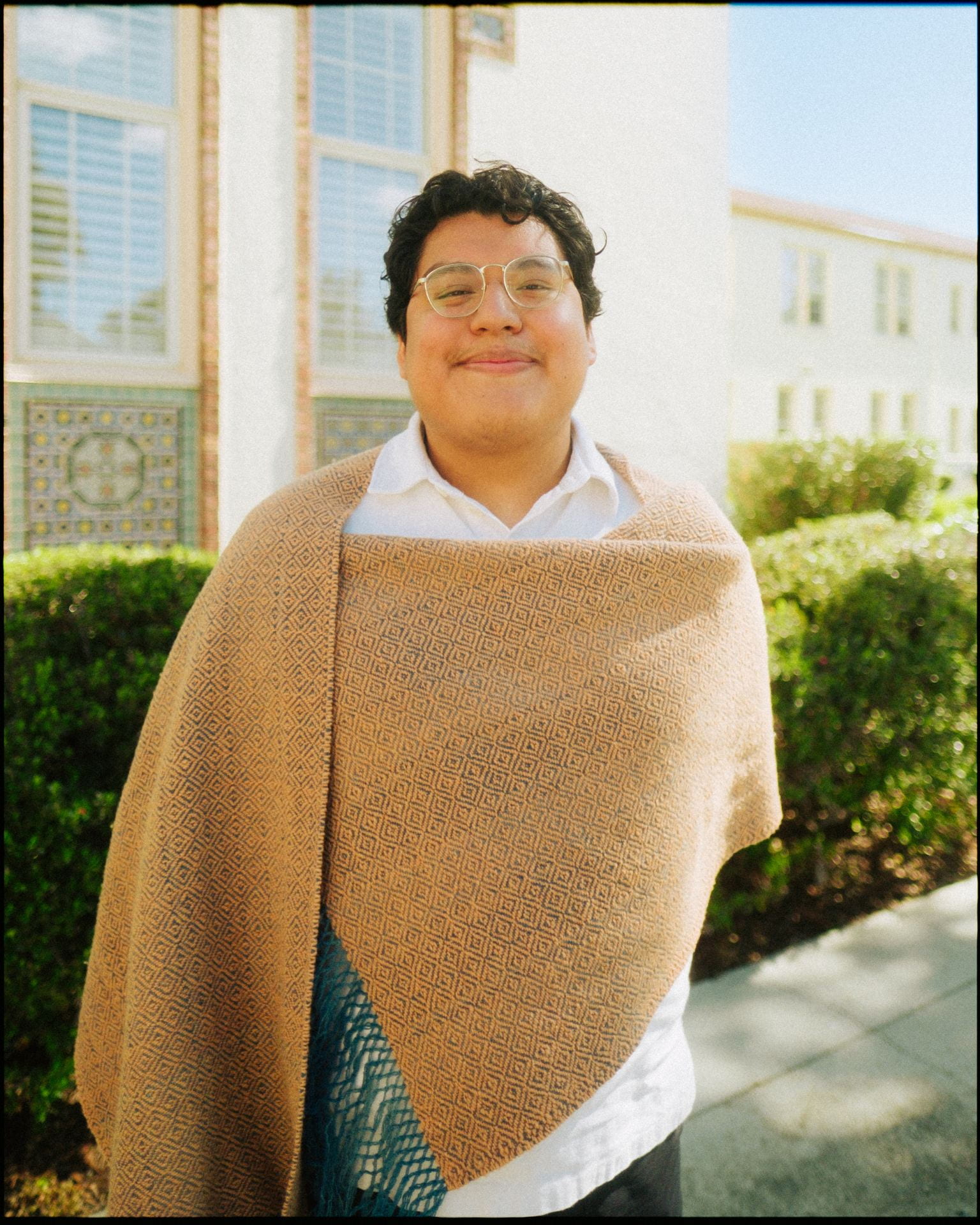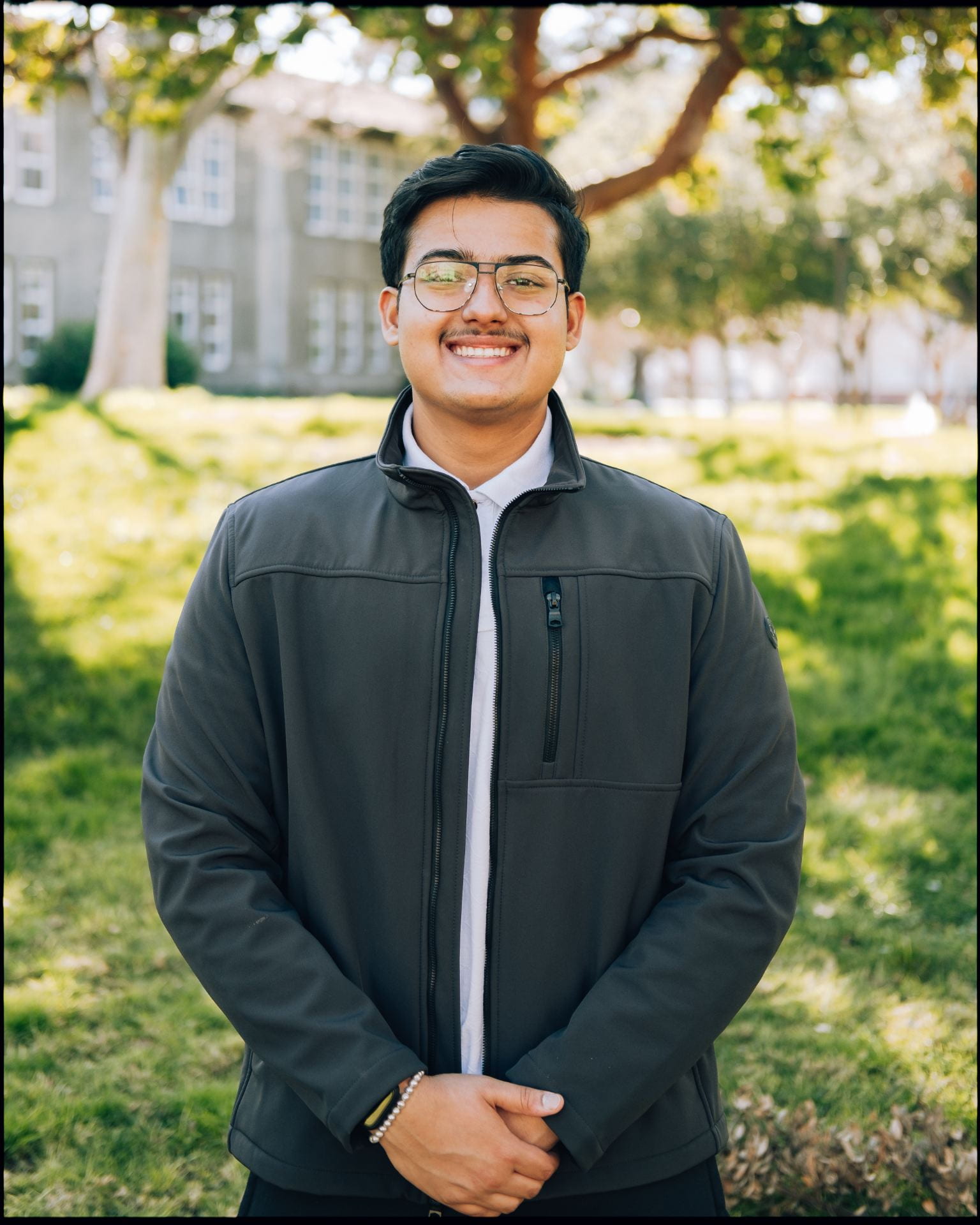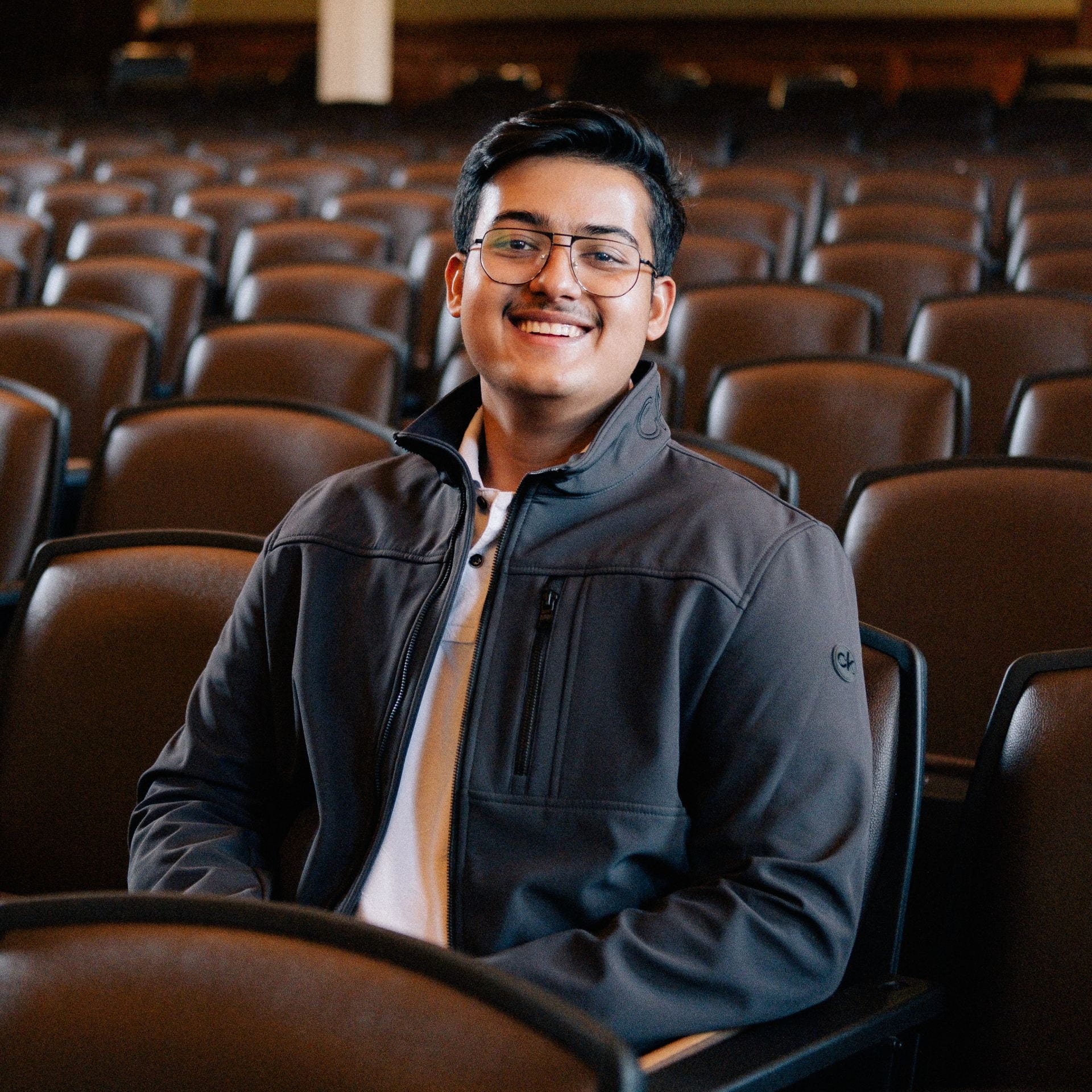Nina Chuang is the A.S. President. In this Spartan Voice by A.S. Blog, Nina shares her story on Justice and Advocacy, two of eight Core Values in the Associated Students Strategic Plan. Read more about our organization’s values in the A.S. Strategic Plan here.

Know History, Know Self: Finding My Voice through Associated Students
Alexa, play “Yellow” by Loft Fruits Music.
Around 1985, two Asian immigrants came to America to pursue higher education and better opportunities for their family. They met in San Jose and had two daughters. My Taiwanese father and Malaysian Chinese mother taught my younger sister and me from a young age the importance of tradition, culture, and pride in one’s heritage.
Growing up in the melting pot that is Fremont, California, I was used to being in spaces with people from diverse backgrounds and identities. I remember proudly wearing my qipao in elementary school for Lunar New Year, and my go-to food to bring to school potlucks was fried red bean sesame balls from my local Chinese bakery. On Saturdays, I attended the Fremont Chinese School where I learned to speak Mandarin, and ate tea eggs made by local Taiwanese grandmas out of their minivans. During cultural holidays, I would call my grandparents and family who were halfway across the world and tried my best to communicate with them in my broken Chinese. I share more about my mixed Asian identity here.
Despite my practices in living authentically my identity as a first generation American, I also had the typical ABC (American Born Chinese) experience; seeing my friends crinkle their nose when I opened my bento, comments about stinky food and the clothes I wore, pulling of eyes, and being questioned as a kid about where I was from. I never truly questioned why I experienced this; there were moments of frustration, but I thought it was normal for someone like me to experience because I was different, after all.
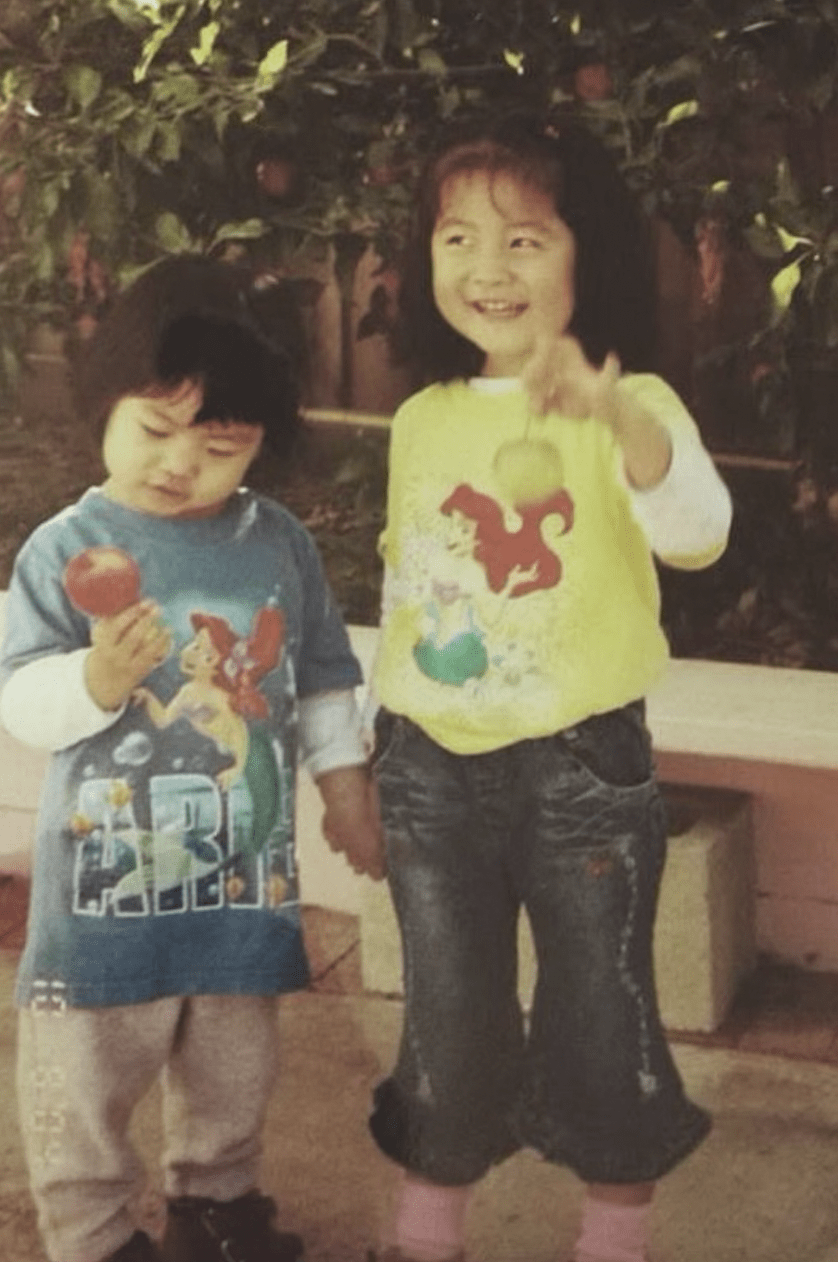
“I am the product of two worlds colliding.”
I began to be curious about the term “Asian American” in high school. I googled the term and for the first time, I read about community uprisal, activism, and social justice. These included the lives of individuals who looked just like me. I knew this was somehow connected to who I was, but there was no one around me that knew about this history or who could explain why injustice in our community happens or how it connected to the microaggressions I continued to experience.
I made an art piece with a collage of images of stereotypes of Americans on one side, and images of stereotypes of Asians on the other, with a woman wearing a qipao in the center. I remember struggling to express how I felt on paper or vocally about this merge of identities that I held. I tried to express this inner turmoil I felt about it through this piece.
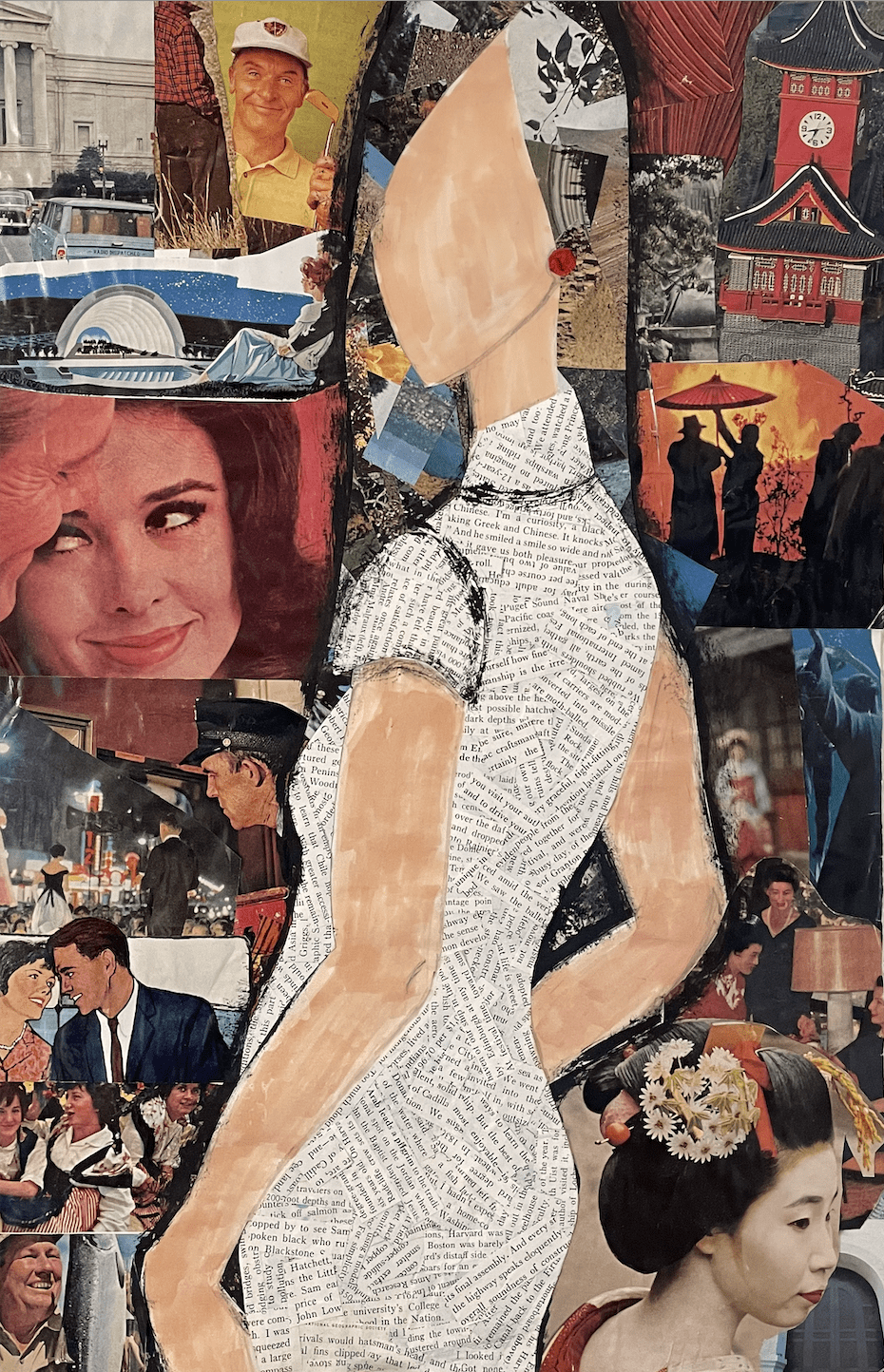
Nina Chuang
An Asian American Woman, 2017
Collage, Acrylic Paint and Marker
An original piece and self portrait of the experience of an Asian American Woman.
Connecting with my roots through education and history during my time at San Jose State allowed me to grow in understanding of my identity as an Asian American woman. I had the opportunity to question and look at our system as a whole, and began to truly find my voice. And finding my voice through Associated Students has blessed me with the opportunity to advocate and serve as a student leader.
There is a powerful quote that is familiar to social justice spaces, “Know History, Know Self. No History, No Self.” by Jose Rizal, the Philippine national hero. This quote teaches and reminds us that understanding our historical background and culture is integral to understanding of self, of who we are, and where we are going.
Before college, I had very few opportunities to learn about the history of the Asian American community. When I envisioned the word, “history,” I imagined dusty books and scrolls sitting in a bookshelf.
In my first semester of college in 2018, I took my first Asian American Studies class with Dr. Heien Do for 33A. I sat in the back of the room, a shy frosh, not knowing what to expect. As the semester went on, learning about topics such as the politicization of the issues of our community, silencing of community voices, model minority myth, injustice towards our brothers and sisters, I found myself leaving the classroom with this fire burning in my chest. I began sitting in the front and asking questions. There was this sense of urgency now.
I, finally, as an 18 year old, in my experience as an Asian American woman, started to learn to truly understand my identity and the term “Asian American” in a safe space. Taking Asian American history classes in college was integral for me to understand who I was as an individual, where I come from, and how to proudly represent my identities in the spaces I am in.
It is important for our student community at San Jose State and beyond to not only see ourselves in our textbooks, but also have the same opportunity to grow in the understanding of one’s history and self.
Recognizing our History
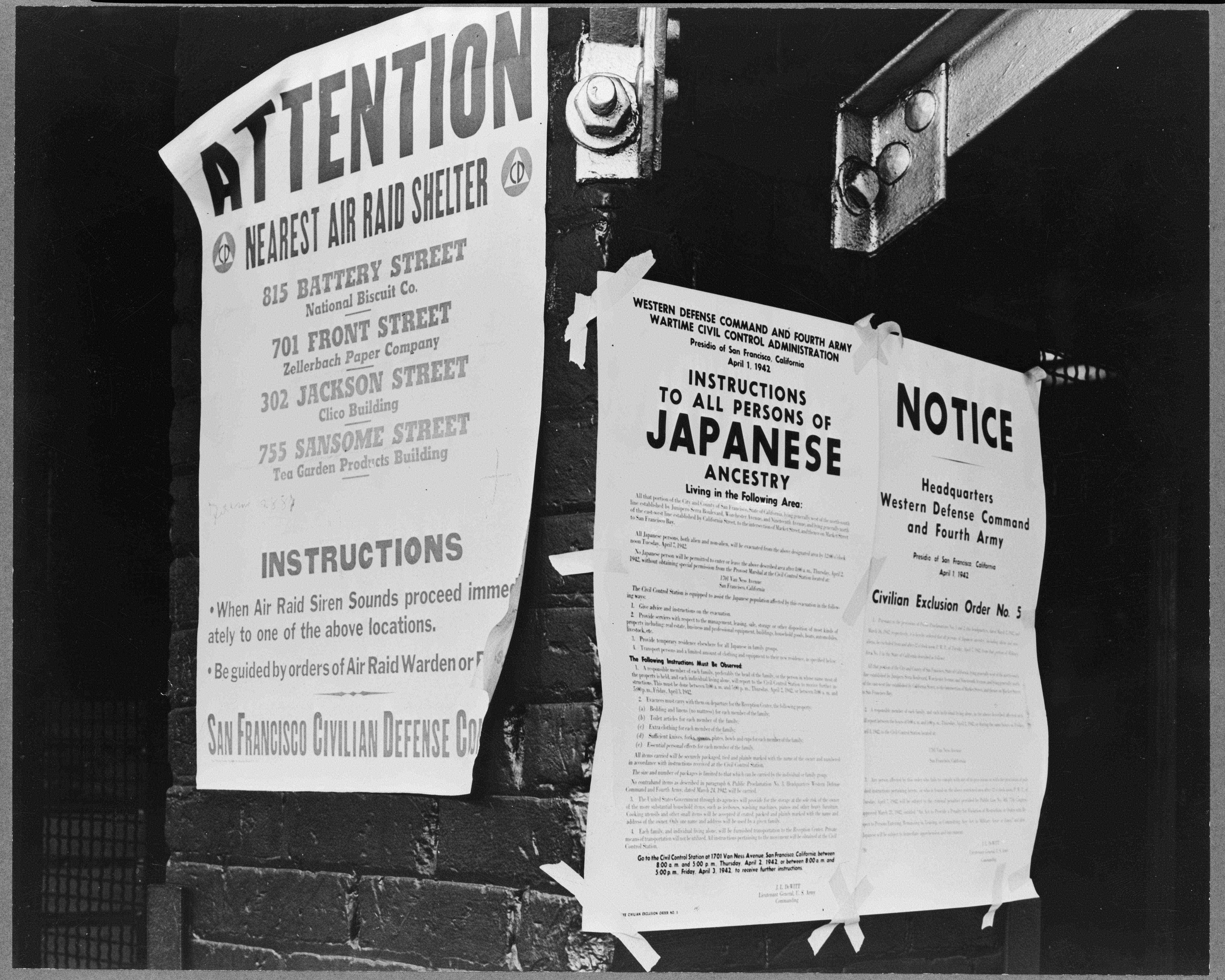
In 1942, Executive Order 9066 was signed by President Franklin D. Roosevelt, which gave the U.S. army the authority to remove civilians from military zones established in Washington, Oregon, and California during World War II. Executive Order 9066 cited “military necessity” as the basis of incarcerating Japanese Americans. This led to the forced removal and incarceration of Americans of Japanese ancestry living on the West Coast, who had to abandon their jobs, their homes, and their lives to be sent to one of ten concentration camps scattered in desolate, remote regions of the country. These sites included: Tule Lake, California; Minidoka, Idaho; Manzanar, California; Topaz, Utah; Jerome, Arkansas; Heart Mountain, Wyoming; Poston, Arizona; Granada, Colorado; and, Rohwer, Arkansas
The forced relocation and incarceration of over 120,000 Japanese Americans, many of whom were American citizens, without any evidence of wrongdoing, was a discriminatory and racist act fueled by fear and prejudice. The denial of due process, attack on civil liberties, and the generational harm caused to the Japanese American community, made particularly visible in San José’s Japantown commemorations, shed light on the atrocities that result from discrimination and Anti-Asian hate.
San José State University played a significant role in the forced removal and incarceration of local Japanese Americans during Executive Order 9066. Yoshihiro Uchida Hall, formerly known as Spartan Complex, served as a processing center for Japanese internment at San Jose State University. 2,487 Japanese Americans were processed before being forced on buses to concentration camps in unknown locations for unknown time frames. This included having Japanese American employees and students of the university assist in the processing of their own community members. – Helen Mineta and Phil Matsumura.
I had the privilege of putting together a two-month long exhibit alongside Dr. Yvonne Kwan from April to May in 2022 called, “Reckoning Our Past, Engaging the Present, Facing the Future: An Exhibit Recognizing San Jose State’s Role in Anti-Asian Racism and the Incarceration of Japanese Americans.” Dr. Kwan and I went to the Special Archives in the MLK, Jr. Library in search of documents and archives of what the school had during that time. I remember these archives being wheeled out in black boxes, which had various tags on them. In these boxes, there were flyers that were posted on campus notifying the community about informative meetings on the camps, large files of information on Japanese American students, photos of the Japanese club, and more.
It was really surreal reading documents and looking at pictures of students who looked like me, that were not only forced to camp in the middle of college, but also the violation of privacy and information that was most likely unknown to them. I remember after this session, going to the MLK Library bathroom, and crying. I was trying to mentally process and understand, thinking “Why didn’t I learn about this before?” and “How could our government and institutions do this to us?”
Being a student at SJSU with my identity as an Asian American woman, stepping foot on the very grounds where my Japanese American brothers and sisters were processed and unjustly mistreated by the institution I attend continues to baffle me to this day.
The fact that I serve as Student Body President for an institution that was complicit for this injustice to happen makes me feel like a contradiction. As a representative of the thousands of current students with various identities who attend our school, and those who came before me, I began to ask my peers and faculty if they knew about our institution’s history with Executive Order 9066. A majority didn’t know.
This “dusty” history, wheeled out in seven black boxes on a squeaky cart, became a call to action. The Spartan community – now and future generations – should know about what occurred to fellow students, our elders, and our allies. on our campus. To better understand our institution, we must acknowledge and condemn this injustice, and take the steps to make sure this never happens again, to any group on campus. Understanding and increasing awareness of this part of our campus’ history is integral to the healing that must occur in order for our University to advance forward in serving our students and Spartan community.
Connecting with the Community
One month after hosting this exhibit with artifacts from JAMSJ and the SJSU Special Archives, I began my term as Associated Students President. On June 1st in 1942, the SJS (now SJSU) Student Body President Don True walked with Japanese and Japanese American SJS students to the train stations to board trains to go to concentration camps for unknown time frames. Eighty years later, on my first day as A.S. President, on June 1st in 2022, we dedicated Cranes of Remembrance by walking with 2,487 cranes folded by students and staff around Yoshihiro Uchida Hall in honor of the 2,487 lives impacted and processed at the Boy’s Gym. This small group of administrators, students, faculty, and staff gathered in the community and had dialogue in this gym, to process and learn from one another.

Throughout this process of learning to recognize this history, hosting events on campus for dialogue, and working on various projects on this topic, a community that emerged as an amazing support system was the local Japantown community leaders and elders. These special people continued to take time out of their day to educate this ignorant, young Asian American girl about their days at SJSU, their lives, and the advocacy for Asian American studies during the Third World Liberation movement. Driven by their advocacy, amazing leadership, and support, we advocated together for the creation of a new campus tradition: Day of Remembrance at San Jose State. This new event is a community ritual that emerged from the Redress Movement as a grassroots means of uniting and mobilizing Japanese Americans to win reparations. It was a precedent-setting achievement which showed that reparations are possible.
I learned about this tradition while sitting in front of Roy’s Coffee shop on a sunny day with Victoria Taketa, who has been a constant advocate for students in her career, during and after her time at San Jose State. Sometimes after we had a coffee chat at Roy’s, Vickie would walk me to various areas in Japantown that were of historical significance – from the Japanese American Museum of San Jose, the community building that use to serve as a hospital, benches of history, the train stop where the community boarded the train to camps, etc. We talked about ways we could work together with the JTown community to advocate for this acknowledgment of history. From the inspirational words of Vickie and engaging conversations at Roy’s, the idea of having an institutionalized educational Day of Remembrance at SJSU was born.

Outside of A.S., I also serve as a Student Research Assistant for Dr. Yvonne Kwan, who is an amazing professor for Asian American studies. In this role, I have the privilege of working on an Oral History Project funded by the County of Santa Clara, in partnership with the San Jose State University Research Foundation. This project highlights the lives and legacies of Santa Clara County Asian American and Pacific Islander (AAPI) leaders and activists, to amplify and uplift their contributions as well as combat racism and anti-Asian violence. Through the narratives of those who have dedicated their lives to fighting for justice and civil rights, this project will not only archive oral histories but also aim to inspire and motivate future generations for a better America via the development of K-16 curriculum.
Working with folks highlighted in this Oral History project and community members, we hosted the first Day of Remembrance in SJSU history, in collaboration with the Nihonmachi Outreach Committee (NOC), CAPISE, APIFSA, and PRIDE. This event was filled with many intentional parts: a keynote dialogue featuring former Congressman Mike Honda and Shirley Kumamoto, film screening from NOC, and a panel of SJSU student activists Kayla Le, Jariah Jaug, Ariana Shah, and Dominic Treseler. Through this event, we saw this organic intergenerational dialogue that took place between our elders, community leaders, and current SJSU students who attended. Connecting with our community and participating in this intergenerational movement is one of the small steps our community must take in order to heal and move forward together, shoulder to shoulder.

Reflecting on my Years in Associated Students
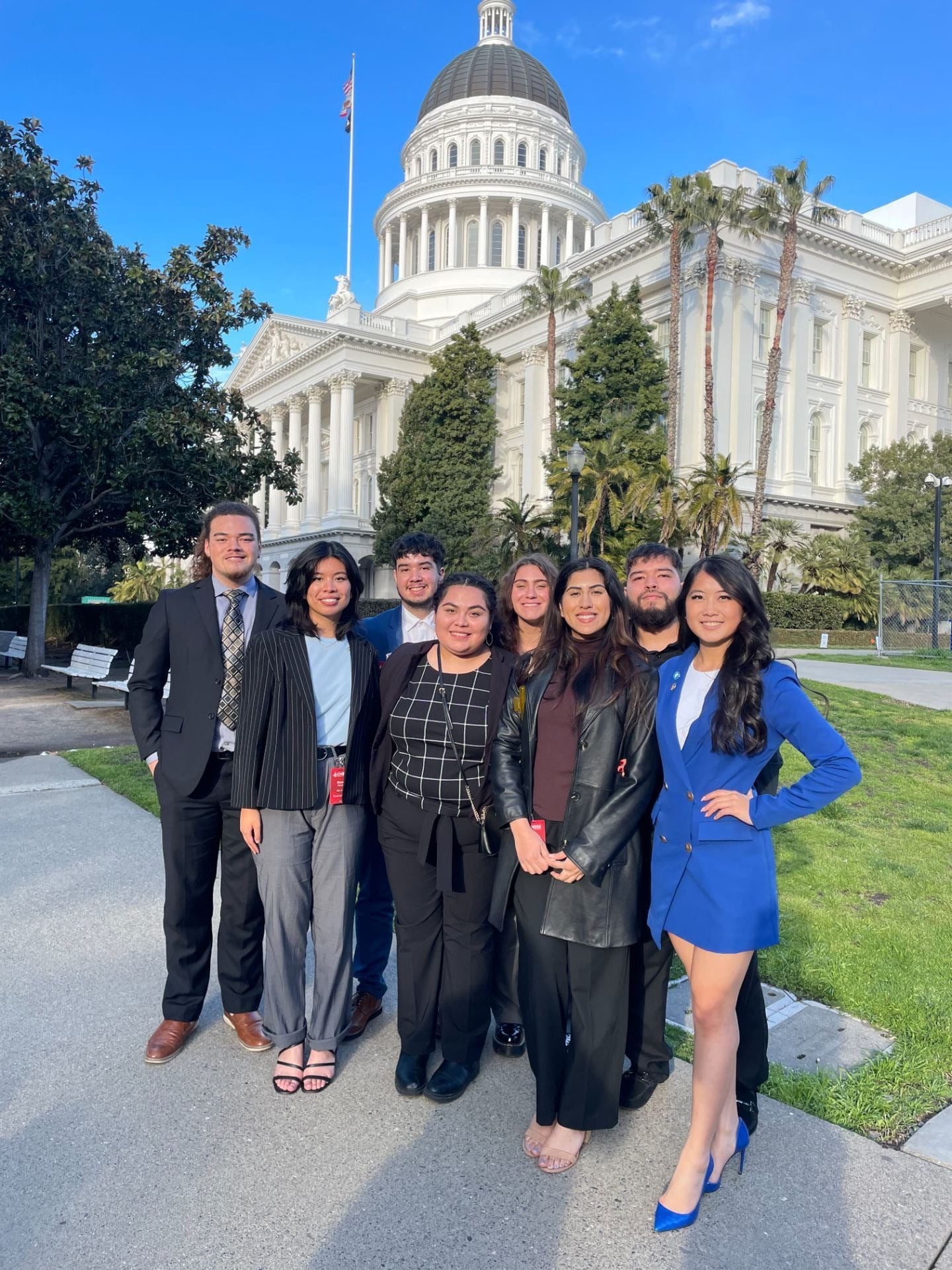
Not going to lie, writing this blog got me in my feels. I can never imagine my time at San Jose State without Associated Students. During my time here I have met so many amazing people and mentors, including those I am honored to call my best friends. From joining Academic Affairs my sophomore year- to running for Director of Student Resource Affairs, then Vice President, and now I will be ending my term as President in six weeks.
In my first year as a Director during COVID, I had the privilege and honor of working alongside past Directors Leland Pama and Cris Acosta with the Johnson Family to put together an online philanthropy music festival called Gregory’s Jam, to support and celebrate Gregory Johnson’s life. The three of us, despite combating many barriers institutionally and personally to be able to advocate and support the Johnson family, fought through injustice to have a moment of joy and community together with locals to celebrate Gregory’s life and honor Mrs. Denise Johnson. I learned from this experience the beauty of agency and resilience. We worked alongside community members and the Johnson family to engage with student organizations, local businesses, and the San Jose community to put together a creative space of activism. 
Later on in that term, we began conversations surrounding the creation of a safe space for APID/A students and communities on campus. I remember feeling angry, sad, and frustrated while processing the Anti-Asian hate happening throughout the world. Our rally #NOTUR34 was a movement we started as a community to advocate and turn our anger as a community into action. During our march, while yelling chants on campus about the violence happening in our community, I felt a warmth in my cheeks and moisture in my eyes as we shouted to the world together- that we are to be heard, to be seen, and to be represented!
After many years of advocacy of those before us and the writing of a resolution by Associated Students, we celebrated the hiring of the Director of CAPISE, Jinni Pradhan, during Lunar New Year while in my role as Vice President, and we recently reached our 1st birthday as a center!! Inspired by our family, our community, and our elders, we found our voice again to demand for change in our systems: to see and support our multifaceted and diverse APID/A community.
In a couple weeks, on April 17th, I will be introducing a Sense of Senate Resolution calling to institutionalize Day of Remembrance at SJSU. This document, written by students, faculty, staff, and community members, condemns and documents the true history of our University’s involvement in Executive Order 9066, the lives and individuals who were impacted by this injustice. It also calls for SJSU to collaborate with the Japantown community to educate the campus community about Executive Order 9066, and the construction of a mural and monument at Yoshihiro Uchida Hall.
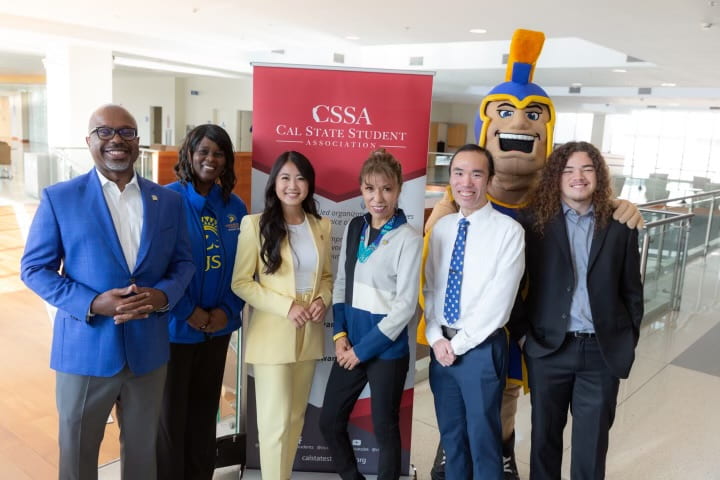
The biggest lesson I learned in Associated Students, SJSU was that advocacy starts with being curious. It can get overwhelming to think about how we will combat systemic issues in our institutions and society, how to decolonize the way we think, or just the overarching reality of the darknesses of the world. But I encourage you to ask small questions, to think critically about the systems you are part of. Because just a little curiosity leads to an opportunity to learn and find your voice. It also leads to questioning how systems are constructed or why things are the way they are. Curiosity leads to dialogue within communities to transform our systems to spaces of change.
This young, curious Asian American woman, who started out her journey with two immigrants coming to the United States pursuing the American dream, stands before you today as the third AAPI woman, first Chinese American woman, first Malaysian American, and first Taiwanese American student to serve as Student Body President at San Jose State, the oldest university in the West.
Asking the question, “why?” helps us move from conforming to transforming the very systems that were never designed for us in the beginning. “Because if not me, then who? If not now, then when?”

Happy APID/A Heritage month. May we continue celebrate with one another our beautiful identities on campus and how far we have come as a community in love and hope. <3
“There is a popular saying, we stand on the shoulders of giants. But I like to think that we are standing shoulder to shoulder, making steps and working together across generations so that injustice does not get repeated for the next.” – Susan Hayase, San Jose Nikkei Resisters














